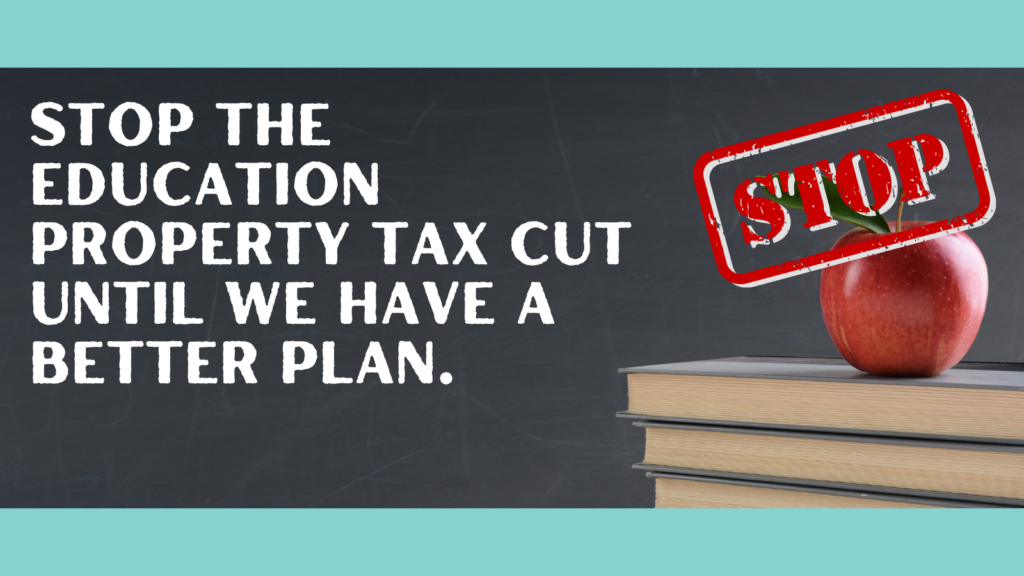
First published in the Winnipeg Free Press on November 14, 2022
The Manitoba government’s plan to eliminate the education property tax – a tax that has funded our public schools since 1890 (The Public Schools Act) – has not met the same level of resistance that was mobilized in opposition to the now-withdrawn Bill 64, but it should.
Known as Bill 71, the Education Property Tax Reduction Act has undermined the effectiveness of school boards, school districts, educators, and school communities. Meanwhile, the government has continued to ignore the growing concerns about underfunding K-12 education.
By implementing this Bill in 2021, government has been supporting the position of the Manitoba Real Estate Association to eliminate education property taxes. Using borrowed money, the government rolled out $246 million in education property tax rebates in 2021, $350 million in 2022, and plans to offer $453 million in rebates in 2023. Despite government claims, these massive tax cuts will increase inequities, inefficiencies, and ineffectiveness. Here is why:
1. Equity: less equity under the concentrated power of the provincial government
The Manitoba government has said that eliminating the education property tax will address the current inequalities between school divisions because all school districts will receive the same amount of funding regardless of how much property taxes they can raise (based on the assessed values of properties in their respective divisions). However, giving the same amount to each school (division) does not lead to equity, defined as the differential distribution of resources necessary to meet the different needs of each student. So far, there is no clear proposal as to how equity will be achieved under the new model. Further, in the new model, the government holds the power to decide how to allocate other funding, as needed, to each school division. These decisions, however, can be unfairly selective, poorly timed, and subject to mismatching and even favouritism.
In contrast, the current funding model of relying on education property taxes has two ways to ensure greater equity: (1) payments to school districts are equalized to make up for differences in property values; and (2) school boards meet local needs by working with a number of partners, piloting local initiatives, and by raising property taxes.
2. Efficiency: less efficiency as less money goes to education while more money goes to financial elites
The Manitoba government’s new funding model – shifting to general tax revenues for school funding – means that whenever its revenues fall below expenditures (which has been the case), it borrows money. Borrowing inevitably leads to interest rate and other fee payments. So, paying for education using general tax revenues means more money for interest payments, and the big banks and financial elites who can lend money to the government make more profit. In fact, the US has been funding its public schools in this way. In 2020, the US’s long-term debt for its entire K-12 education system surpassed US$500 billion. That’s a lot of money not going to education.
By contrast, the property tax-based funding model pays for education based on the current assessed values of properties. This ensures stable funding on par with economic and population growth. Those who can afford pricey properties or own large corporations can (and should) shoulder a greater tax responsibility for public education. The new model, however, gives large tax cuts to wealthy property owners, landlords, and corporations, unlike the previous education property tax credit.
3. Effectiveness: less effective due to reduced attention to community voices
Property taxes are part of the community-based resources that have effectively supported the public education of many generations of Manitobans and is part of a system in which locally elected trustees work closely with schools and school districts. Unlike MLAs, trustees are elected solely because they advocate for public education. Trustees can thus be more effective than provincial politicians in improving education.
Under the education property-tax model, schooling is more effective because trustees, educators, and families have more opportunities to work together to address schools’ needs. Eliminating the education property tax, one of the few wealth taxes we have, will lead to inadequate funding for effective public education and will require cuts, deficits, or tax increases in other public services.
So, let’s stop the education property tax cut by repealing Bill 71 until we have a better plan that can meaningfully improve equity, efficiency, and effectiveness while adequately funding public education in Manitoba.
Ee-Seul Yoon is an associate professor at the faculty of education, University of Manitoba and a Research Affiliate with the Canadian Centre for Policy Alternatives – Manitoba. This op-ed is the first in a series adapted from speeches given by the author at the Picnic for Public Education event on September 11, 2022, organized by People for Public Education.


